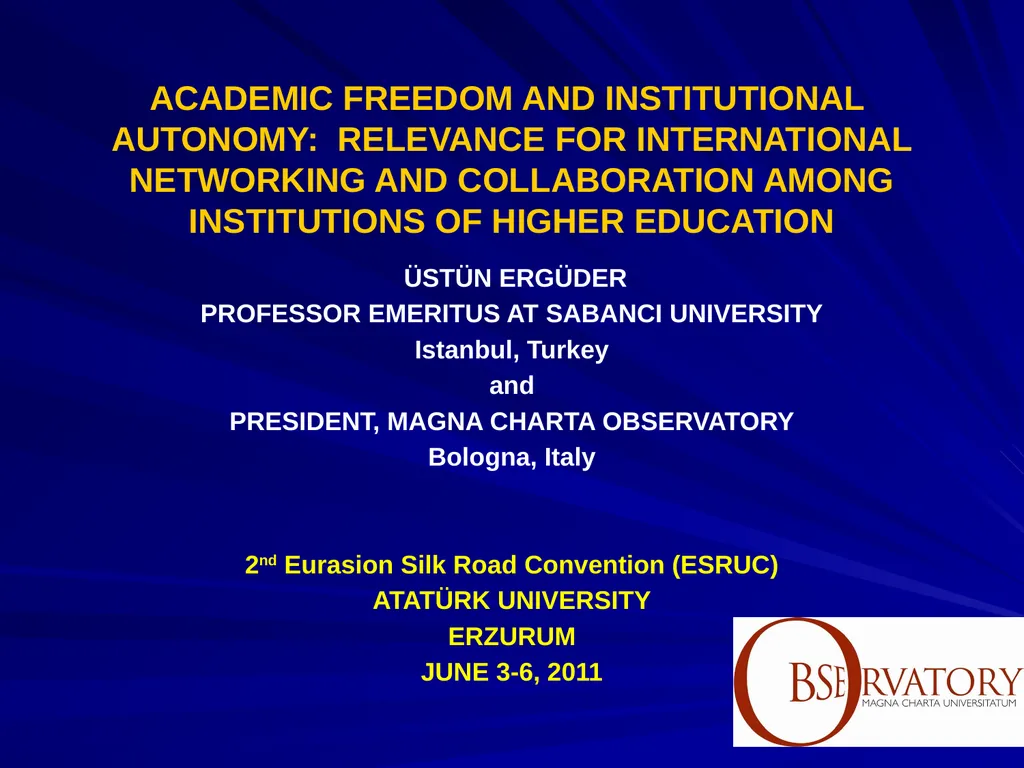
ACADEMIC FREEDOM AND INSTITUTIONAL AUTONOMY:
Author: liane-varnes | Published: 2025-07-16
Description: ACADEMIC FREEDOM AND INSTITUTIONAL AUTONOMY: RELEVANCE FOR INTERNATIONAL NETWORKING AND COLLABORATION AMONG INSTITUTIONS OF HIGHER EDUCATION ÜSTÜN ERGÜDER PROFESSOR EMERITUS AT SABANCI UNIVERSITY Istanbul, Turkey and PRESIDENT, MAGNA CHARTA
Download Presentation
Download the PPT/PDF: Download
Transcript:
Loading transcript�